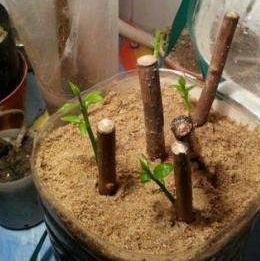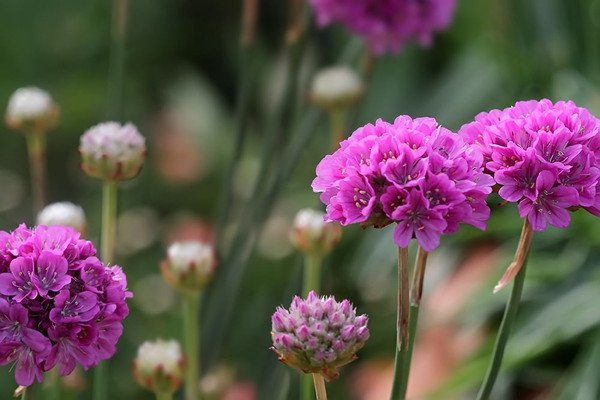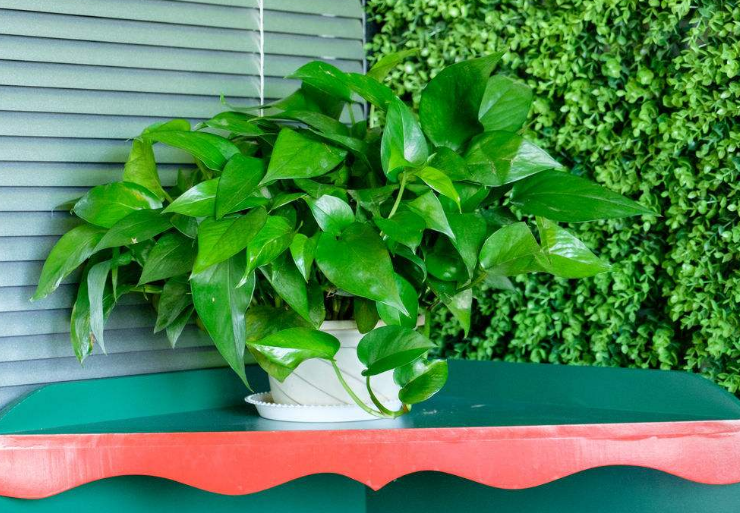Cuttage-plant cloning
A light tongue sticking out and the camera "naughty" to say hello, a round mouth open to sit cleverly. These are two different monkeys, Zhong Zhong and Hua Hua. Through the unremitting efforts of Chinese scientists over the past five years, two cloned monkeys "Zhong Zhong" and "Hua Hua" were born in China and developed well. This is the first case of somatic cloned monkey in the world. Today, the results are published in the top academic journal Cell of biology.
Cloning can be understood as copying, copying. Refers to a genetically uniform biota produced through asexual reproduction. Refers to asexual proliferation at different levels of individuals, cells, genes, etc.
In the asexual proliferation of plants, plant germination, cuttings and other individual groups that grow from the same individual through asexual reproduction are regarded as clones. By using the method of tissue culture, plant cells can be cultured and developed into complete individuals (calli). Individuals with the same genotypes obtained by this method are also called clones.
Today, we teach you how to cuttage properly to clone plants.
Selection of cutting materials

Generally speaking, cuttings should choose branches with strong growth and full tissue. For the branches of the same mother tree, the annual branch is better than the perennial branch, the lateral branch is better than the terminal branch, and the sunny branch is better than the shady branch. Some plants are just the opposite, such as rose. Terminal branches are easier to root.
Selection of cutting substrate
The cutting substrate has a great influence on the rooting of cuttings. according to the different cutting substrate, it can be divided into soil cutting (substrate cutting), water cutting and spray cutting (air cutting).
Soil cutting, also known as substrate cutting, is the most widely used cutting method, its cutting substrate is mainly perlite, peat, vermiculite, sand and other materials, some horticultural enterprises use slag. The proportion of perlite, peat and yellow sand is generally 1:1:1. Peat can maintain moisture, at the same time, peat contains a lot of humic acid, which can promote plant rooting. It is better to choose semi-rotten, rough peat with coarse sand and large-grained perlite, which is conducive to ventilation and drainage, but also conducive to the formation of roots.
Using water as the cutting substrate, about 1-2cm at the base of the cuttings was inserted into the water. The water must be kept clean and changed frequently. The adventitious root produced by water insertion should be brittle, and when it grows to 2-3 cm, it can be transplanted or on the pot. the plants commonly used for water insertion are gardenia, mint and so on.
Spray cuttings (air cuttings) are also called inorganic cuttings. It is suitable for rooting plants in the skin, the method is that the lignified or semi-lignified branches are fixed on the frame and sprayed to the cuttings regularly.
Cutting method
1. Branch cutting
Use the branches or stems of a plant as cutting material. According to the Lignification degree of cutting materials, it can be divided into softwood cuttings and hardwood cuttings. Hardwood cuttings are generally carried out before sprouting in spring, cut in autumn, stored at low temperature and moisturized after cutting, and cut in the following spring. You can choose sturdy, bud-filled branches to cut into 15-20 cm long stem segments. Some take a small piece of old branch or branch belt-a small section of main branch shaped like a horseshoe, that is, cuttings with heels, it is easier to take root. After cutting the cuttings, use the pruning shears at the base of the stabbing to gently cut several wounds along the direction of the branches to increase the area of callus to facilitate rooting. Winter hand warmer areas, such as Jiangsu, Zhejiang and Anhui provinces, can also be cut in autumn and winter, buckle shed to keep warm, can take root in early spring. Softwood cuttings are generally carried out in the semi-Lignification of new branches, which are faster than hardwood cuttings and easy to survive (most herbaceous flowers use softwood cuttings). The cuttage length is 10-15cm; it can also be single bud or leaf bud cutting, that is, the length of leaf bud is 2-5cm, and herbaceous plants can be slightly shorter. Compared with hardwood cuttage, softwood cuttage management is more difficult.
2. Leaf cutting
Leaf cutting is the use of the leaves of some plants whose veins or petioles are easy to form adventitious roots, such as begonia, sedum, tiger-tailed orchid, lilies (scale cuttings), paulownia and African violets. When cutting, the whole leaf or leaf is sliced, cut directly, obliquely or horizontally on the substrate, and when it is laid flat, a small amount of matrix should be covered to the base of the leaf. Like tender wood cuttings, strengthening the management of temperature and humidity will quickly sprout from the root of the vein or petiole to form a new plant.
3. Root insertion
The main ones suitable for root insertion are Xanthoceras sorbifolia, kiwifruit, poplar, figs and North American Lingxiao. Toona sinensis and other plants, the method is to cut the root of the plant which is 0.5-1cm thick into 6-15cm length, when cutting the root, put its top in the same direction, in order to prevent inverted cutting. Root cuttings sometimes lose the character of flowers and leaves. The roots are usually cut at the end of autumn and cut in the following spring.
Plug-in management
Mainly humidity, light, temperature control. Appropriate shading is carried out according to the shade tolerance of plants, cutting and shading are divided according to the response of plants to light. Generally speaking, hardwood cutting is carried out in spring when the bud is not sprouting and the temperature is mild, which is beneficial to rooting; except for a few high temperature areas, the temperature of tender wood cutting can be adjusted by selecting cutting period, or spray cooling and water curtain fan can be used to cool down. High temperature and humidity can easily cause plant disease, high temperature, too much humidity, cuttings are easy to get sick and rot; if the humidity is too low, cuttings will dry up and die. Therefore, when adjusting the spray, we should first ensure that the leaves are moist and not wilting, and at the same time pay special attention to checking the water content of the substrate. The simplest method is to grasp a handful of matrix with hand, hold tight, finger seam does not drip water, after the hand is loosened, the matrix does not spread or have a little crack, indicating that the water content of the matrix is appropriate; if the water content of the finger seam is too high, the spray should be controlled; the matrix is scattered and the water content is too low, it should be sprayed to replenish water. Different plants have different adaptability to humidity, so cuttings should be divided according to the demand of plants for humidity.
Time: 2019-04-22 Click:
- Prev

Culture methods and points for attention of Dianthus mandshurica
There is a good saying: it is easy to watch flowers, but difficult to grow them. Many people will praise a few words when watching the flowers, such as the beauty of this flower and the delicate beauty of that flower, but they do not know how much painstaking efforts of the breeders. It can be seen that growing flowers is not an easy thing, ah, it all needs certain methods.
- Next

The maintenance method of green apple why do you need a pot of green apple at home?
Green pineapple alias: Golden kudzu, golden vine, rattan taro, family and genus: Araceae green radish genus, florescence: summer, indoor breeding rarely bloom. Flower words: tenacious and kind-hearted, watching happiness. Usage tips: suitable for office, family care, gifts to relatives and friends. So why must we keep a pot of green apple at home or in the office?
Related
- Fuxing push coffee new agricultural production and marketing class: lack of small-scale processing plants
- Jujube rice field leisure farm deep ploughing Yilan for five years to create a space for organic food and play
- Nongyu Farm-A trial of organic papaya for brave women with advanced technology
- Four points for attention in the prevention and control of diseases and insect pests of edible fungi
- How to add nutrient solution to Edible Fungi
- Is there any good way to control edible fungus mites?
- Open Inoculation Technology of Edible Fungi
- Is there any clever way to use fertilizer for edible fungus in winter?
- What agents are used to kill the pathogens of edible fungi in the mushroom shed?
- Rapid drying of Edible Fungi

